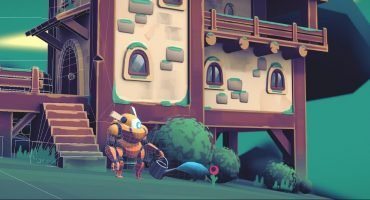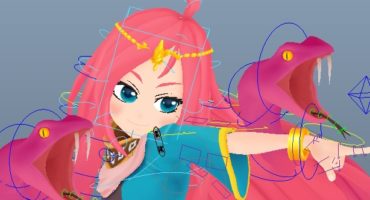Hi, I’m Antonio Gordillo.
After almost a decade of experience in graphic arts, I have directed my professional development towards the field of video games, both 3D animation, modeling, and project development. I am a specialist in texturing and UV maps.
Currently I am dedicated exclusively to 3D modeling and I am in continuous training to learn new tools and techniques. My artistic tastes are varied but there is an artist that inspires me a lot: Jake Parker.
Creation process
Always in my creation process I take several references of images which have elements that I will include in my model, and then I decide which parts I like the most and go from there.
Then I make a brief sketch in order to have a guide. If an idea comes up while I am modeling, I also include it.
Low Poly Modeling
Once I have the general idea, I start modeling the truck using Maya, the program I am most familiar with.
I start with primitive figures modeling with Maya tools. The tools I use the most are extrude, insert edge loop, and Boolean operations.
During modeling I am continually relying on references.
The modeling is done in parts (cabin, body, details) and then I assemble the parts. In addition, I always reuse elements from other works.
Unwrapping UVs
Unwrapping UVs in Maya version 2018 works quite well.
The first step is to see how many materials I will use. Once that is clear I start isolating the object and projecting the faces according to the position of the same. I make the cuts where appropriate and unwrap. It is important to activate the UV checker to see the proportion of the shell or islands, the parts that look less and those that you want to highlight are diminished. The important thing is to take advantage of all the space that can be superimposed on islands or shell. If the model is symmetrical, eliminate half of it, open the UVs and, once open, you duplicate it again to take advantage of the maximum space.
All this is important to take into account because if the elements are not completely symmetrical or the shell is not well overlapped you can have problems when you bake the maps (environmental occlusion, normal map, curvature).
High Poly Modeling
Having made the low poly model with the open UVs I make a high poly model for the details.
This process I do in ZBrush. First I create polygroups from the UVs.
Then I fold the edges so that I can make subdivisions without deforming the models (menu>fold geometry>fold by polygroups).
I subdivide several times to bring a Dynamesh to 2000. Once the dynamesh is made I subdivide it up to about 25 million polygons and apply the details.
Baking Maps (High to Low Poly)
I bake maps in xNormals, a very simple and quite efficient program.
I introduce the high poly model with the detail I made in ZBrush and low poly Maya in each model’s corresponding button.
In bake options I select the maps that I want to bake, the ones that interest me for my workflow, and I select the destination of the file as well as the image format.
The maps that I select are Normal, Occlusion and Curvature because I need them for Substance Painter
Texturing in Substance painter
Texturing in Substance Painter is one of my favorite parts of the work although I like the whole process of applying materials. I love texture masks.
First I create the alphas and brushes that are necessary in Photoshop.
I import all the resources that I have been doing previously and I bake the textures in Substance Painter and I check that everything is fine.
Once the bake is done, I introduce the maps that I had generated in xNormal to each corresponding area.
Once I have the maps in place, I apply some smart materials that will be affected by the previously introduced maps (curvature for material wear and occlusion).
I am applying materials and masking (with the 4l key object option) to the parts that affect said material.
For this model I used a military material that uses procedural textures. I edited the saturation a bit to get the tone I was looking for. I do not usually use more than two shades to texturize for this type of model.
Finally I add a blank layer with the filter bake light, that same layer I put in multiply and I leave only the base color active so it does not affect the other materials.
Finally I export the textures, I choose the Sketchfab option and upload directly with all the textures already applied to save a little time.
Post Processing in Sketchfab
This is one of the most fun parts because you can light up your scene as best suits you and apply post-processing filters that increase the realism of your model.
Finally, I would like to thank Sketchfab for the opportunity to show my creation process and my workflow. I hope you have found it useful.
Greetings to all.

















